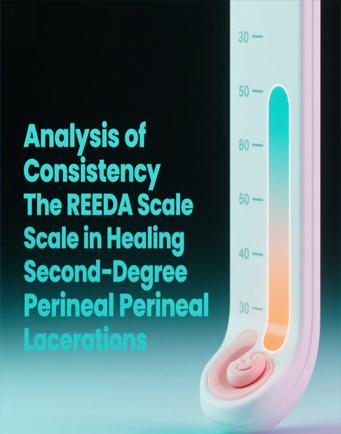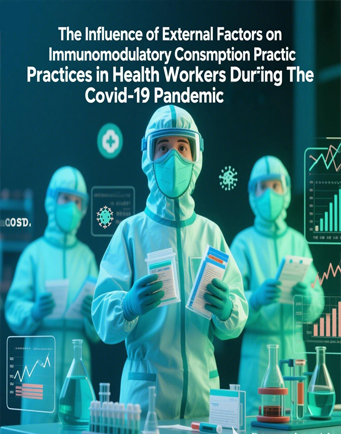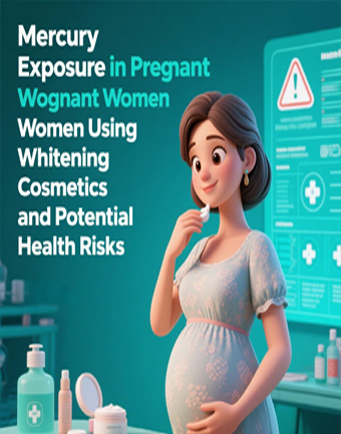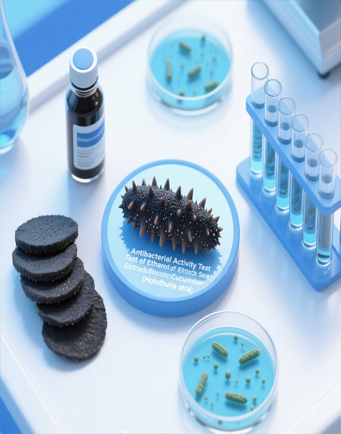Dengue Control Model, Abate Sowing and Larvitrap Installation in Dengue Endemic Areas of Kupang City
Downloads
The bite of the Aedes sp mosquito causes nearly 0 million people to be infected with the dengue virus annually, one of areas declared as an endemic area is East Nusa Tenggara Province. 5669 cases and 58 deaths due to dengue hemorrhagic fever (DHF) were found in East Nusa Tenggara Province in 2020 (CFR 1.02%). Highly influential external factors include the availability of clean water, the crisis of drinking water and clean water, and poor condition of water container that do not meet the requirements. This study aims to manage Larvitrap installation movement and abatezation of the water containers in the community/households in Kupang City. This was a observational study with survey design regarding the installation of Larvitrap tool. The density of mosquito larvae was measured based on the House Index (HI), Container Index (CI), and Breteau index (BI). 383 families were involved as the study samples who were selected using the accidental sampling technique. The results showed that there were 866 units of water resevoir (47.8%). Fatululi Village had the highest percentage of indoor water container by 15.7% (140 units), and Oesapa Village had the highest percentage of outdoor water container by 15.5% (143 units). The highest percentage of positive indoor water container was found in TDM and Kelapa Lima by 30.4%, while the highest percentage of positive outdoor water container was found in TDM village by 48.4%. Aedes aegypti larvae and Aedes albopictus larvae were identified in the indoor and outdoor water containers in TDM Village, while that were only aedes aegypti larvae found in six other villages. The positive larvitrap larvae found in Oebufu Village was 15%, 10% was found in Oesapa Village, while there were no larvae found in 5 other villages. The flick density index obtained the highest House Index (HI) in Kelapa Lima village by 58.33%, the highest Container Index (CI) was found in TDM village by 44.03% and the highest Breteau Index (BI) was found in TDM village by 218.75%. It can be concluded that it is necessary to conduct education on mosquito larvae control that involves active community participation and supervision towards weekly draining of community water containers. In addition, abate sprinkling and dengue vector control activities should be carried out simultaneously throughout Kupang City at the beginning of the rainy season, at the peak of case incidence and at the end of the rainy season.
Agustina, E., & Kartini, K. (2019). Jenis Wadah Tempat Perindukan Larva Nyamuk Aedes Di Gampong Binaan Akademi Kesehatan Lingkungan. Prosiding Seminar Nasional Biotik, 6(1), 600-606. Retrieved from https://jurnal.ar-raniry.ac.id/index.php/PBiotik/article/view/4302
Arfan, I., & Rizky, A. (2021). Pemanfaatan Larvitrap sebagai Upaya Pencegahan Demam Berdarah di Daerah Endemis. E-Dimas: Jurnal Pengabdian kepada Masyarakat, 12(4), 703-709. https://doi.org/10.26877/e-dimas.v12i4.7035
Cahyani, I. P. (2019). Hubungan Kepadatan Jentik Aedes sp. Dengan Kejadian Demam Berdarah Dengue (DBD) Di Kecamatan Magetan, Kabupaten Magetan Tahun 2019. Skripsi Thesis. Poltekkes Kemenkes Surabaya. Retrieved from http://repo.poltekkesdepkes-sby.ac.id/910/
Candra, A. (2010). Demam Berdarah Dengue: Epidemiologi, Patogenesis, dan Faktor Risiko Penularan. ASPIRATOR-Journal of Vector-borne Disease Studies, 2(2), 110-119. Retrieved from http://ejournal2.litbang.kemkes.go.id/index.php/aspirator/article/view/1787
Ernyasih, E., Janati, Y. N., Fauziah, M. & Andriyani. (2022). Overview of Evaluation of The Implementation of Dengue Hemorrhagic Fever Prevention and Control Program In The Work Area Puskesmas Tanah Baru, Depok City, in 2021. Muhammadiyah International Public Health and Medicine Proceeding, 2(1), 350-365. Retrieved from https://e-journal.fkmumj.ac.id/index.php/miphmp/article/view/292
Hartoyo, E. (2016). Spektrum klinis demam berdarah dengue pada anak. Sari Pediatri, 10(3), 145-150. http://dx.doi.org/10.14238/sp10.3.2008.145-150
Hadi, U. K., Soviana, S., & Gunandini, D. D. (2012). Aktivitas nokturnal vektor demam berdarah dengue di beberapa daerah di Indonesia. Jurnal Entomologi Indonesia, 9(1), 1-6. https://doi.org/10.5994/jei.9.1.1
Hendri, J., RES, roy, & Prasetyowati, H. (2010). Tempat Perkembangbiakan Nyamuk Aedes spp. Di Pasar Wisata Pangandaran. ASPIRATOR - Journal of Vector-Borne Disease Studies, 2(1), 23-31. Retrieved from http://ejournal2.litbang.kemkes.go.id/index.php/aspirator/article/view/1767
Inten, A. A. I., & Purna, N. (2019). Tingkat Kepadatan Jentik Nyamuk Aedes Aegypti Sebagai Vektor Demam Berdarah Dengue (DBD) Di Wilayah Kerja Unit Pelaksana Teknis Kesmas Blah batuh I Tahun 2018. Jurnal Kesehatan Lingkungan (JKL), 9(1), 63-72. https://doi.org/10.33992/jkl.v9i1.656
Iriani, Y. (2016). Hubungan antara curah hujan dan peningkatan kasus demam berdarah dengue anak di Kota Palembang. Sari Pediatri, 13(6), 378-383. http://dx.doi.org/10.14238/sp13.6.2012.378-83
Karyanti, M. R., & Hadinegoro, S. R. (2016). Perubahan epidemiologi demam berdarah dengue di Indonesia. Sari Pediatri, 10(6), 424-32. http://dx.doi.org/10.14238/sp10.6.2009.424-32
Kelen, M., Salmun, J., & Setyobudi, A. (2022). Risk Factors of Dengue Hemorrhagic Fever in Oesapa Village, Kelapa Lima Sub-District. Media Kesehatan Masyarakat, 4(2), 140-148. https://doi.org/10.35508/mkm.v4i2.3164
Kementerian Kesehatan Republik Indonesia. (2018). Situasi Penyakit Demam Berdarah Di Indonesia 2017. Journal of Vector Ecology, 31(1), 71–78.
Kementerian Kesehatan Republik Indonesia. (2017). Peraturan Menteri Kesehatan Republik Indonesia Nomor 50 Tahun 2017 tentang Standar Baku Mutu Kesehatan Lingkungan Dan Persyaratan Kesehatan Untuk Vektor Dan Binatang Pembawa Penyakit Serta Pengendaliannya. Kementerian Kesehatan Republik Indonesia.
Khairunnisa, U., Wahyuningsih, N. E., & Hapsari, H. (2017). Kepadatan Jentik Nyamuk Aedes sp. (House Index) sebagai Indikator Surveilans Vektor Demam Berdarah Dengue di Kota Semarang. Jurnal Kesehatan Masyarakat, 5(5), 906 -910. https://doi.org/10.14710/jkm.v5i5.19216
Kusuma, A. P., & Sukendra, D. M. (2016). Analisis spasial kejadian demam berdarah dengue berdasarkan kepadatan penduduk. Unnes Journal of Public Health, 5(1), 48-56. https://doi.org/10.15294/ujph.v5i1.9703
Nuryati, E., & Thamrin, T. (2012). Analisis Spasial Kejadian Demam Berdarah Dengue Di Kota Bandar Lampung Tahun 2006-2008. Jurnal Ilmiah Kesehatan, 1(2). Retrieved from https://www.ejournal.umpri.ac.id/index.php/JIK/article/view/1004
Palgunadi, B. U., & Rahayu, A. (2011). Aedes aegypti sebagai vektor penyakit demam berdarah dengue. Surabaya: Universitas Wijaya Kusuma Surabaya. Retrieved from https://repository.dinus.ac.id/docs/ajar/AEDES_AEGYPTI_SEBAGAI_VEKTOR_PENYAKIT_DEMAM_BERDARAH_DENGUE.pdf
Prasetyowati, H & Ginanjar, A. (2017). Gambaran Maya Indeks dan Kepadatan Larva di Daerah Endemis DBD Jakarta Timur. Vektora: Jurnal Vektor dan Reservoir Penyakit, 9(1), 43-49. https://doi.org/10.22435/vk.v9i1.5263.43-49
Purnamasari, B., & Kadir, S. Distribusi Keruangan Spesies Larva Aedes sp. dan Karakteristik Tempat Perkembangbiakan di Kelurahan Karunrung Kota Makassar. Bionature, 17(1), 7-13. Retrieved from https://ojs.unm.ac.id/bionature/article/view/2588
Sari, I. P. (2021). Gambaran Kepadatan Jentik Nyamuk Aedes Aegypti Ditinjau Dari Tempat Perkembangbiakan (House Index) Di Kelurahan Kebun Bunga Kecamatan Sukarami Kota Palembang Tahun 2021. Diploma Thesis. Retrieved from https://repository.poltekkespalembang.ac.id/items/show/3169
Sari, N. A. (2013). Sistem Pakar Mendiagnosa Penyakit Demam Berdarah Menggunakan Metode Certainty Factor. Pelita Inform. Budi Darma, 4, 100-103.
Sinaga, M., & Simanungkalit, C. (2021). Kepadatan Jentik Aedes Aegypti Di Kelurahan Angin Nauli Kecamatan Sibolga Utara. Jurnal Ilmiah Keperawatan Imelda, 7(1), 68-72. https://doi.org/10.52943/jikeperawatan.v7i1.511
Tairas, S. (2015). Analisis pelaksanaan pengendalian demam berdarah dengue di Kabupaten Minahasa Utara. Jikmu, 5(1), 21-29. Retrieved from https://ejournal.unsrat.ac.id/index.php/jikmu/article/view/7175
Wanti, W., & Darman, M. (2014). Tempat penampungan air dan kepadatan jentik Aedes sp. di daerah endemis dan bebas demam berdarah dengue. Kesmas: Jurnal Kesehatan Masyarakat Nasional (National Public Health Journal), 9(2), 171-178. http://dx.doi.org/10.21109/kesmas.v9i2.514
Widada, A., Putri, V. H. E., & Sari, A. K. (2021). Analisis Kepadatan Jentik Nyamuk Aedes sp Di Kelurahan Kandang Kota Bengkulu. Journal of Nursing and Public Health, 9(1), 1-9. https://doi.org/10.37676/jnph.v9i1.1426
Wirayoga, M. (2014). Hubungan Kejadian Demam Berdarah Dengue Dengan Iklim Di Kota Semarang Tahun 2006-2011. Unnes Journal of Public Health, 2(4), 1-9. https://doi.org/10.15294/ujph.v2i4.3055
Widyastuti, D. A., & Rahayu, P. (2018). Karakteristik Tempat Perindukan Aedes Sp. Dan Potensi Penularan Demam Berdarah Dengue Di Kelurahan Karangtempel Kecamatan Semarang Timur Kota Semarang. Prosiding Seminar Nasional Pendidikan Biologi dan Saintek Ke-3, 307-312. Retrieved from https://publikasiilmiah.ums.ac.id/handle/11617/10506
Zen, S., & Rahmawati, D. (2015). Kepadatan Jentik Nyamuk Aedes spp Ditinjau Dari Nilai Breteu Index (BI), Container Index (CI), dan Human Index (HI) Di Kelurahan Metro Kecamatan Metro Pusat Kota Metro Lampung Tahun 2015. Prosiding Seminar Nasional ISBN Universitas Muhammadiyah Metro, 294-303. Retrieved from https://repository.ummetro.ac.id/files/artikel/2829d5a121e6f323b419795589583a95.pdf
Zubaidah, T., Setiadi, G., & Akbari, P. (2014). Kepadatan jentik aedes sp pada kontainer di dalam dan di luar rumah di Kelurahan Surgi Mufti Banjarmasin tahun 2014. Jurnal Buski, 5(2), 95-100. Retrieved from http://ejournal.litbang.kemkes.go.id/index.php/buski/article/view/3751
Copyright (c) 2023 JURNAL INFO KESEHATAN

This work is licensed under a Creative Commons Attribution-NonCommercial-ShareAlike 4.0 International License.
Copyright notice
Ownership of copyright
The copyright in this website and the material on this website (including without limitation the text, computer code, artwork, photographs, images, music, audio material, video material and audio-visual material on this website) is owned by JURNAL INFO KESEHATAN and its licensors.
Copyright license
JURNAL INFO KESEHATAN grants to you a worldwide non-exclusive royalty-free revocable license to:
- view this website and the material on this website on a computer or mobile device via a web browser;
- copy and store this website and the material on this website in your web browser cache memory; and
- print pages from this website for your use.
- All articles published by JURNAL INFO KESEHATAN are licensed under the Creative Commons Attribution 4.0 International License. This permits anyone to copy, redistribute, remix, transmit and adapt the work provided the original work and source is appropriately cited.
JURNAL INFO KESEHATAN does not grant you any other rights in relation to this website or the material on this website. In other words, all other rights are reserved.
For the avoidance of doubt, you must not adapt, edit, change, transform, publish, republish, distribute, redistribute, broadcast, rebroadcast or show or play in public this website or the material on this website (in any form or media) without appropriately and conspicuously citing the original work and source or JURNAL INFO KESEHATAN prior written permission.
Permissions
You may request permission to use the copyright materials on this website by writing to jurnalinfokesehatan@gmail.com.
Enforcement of copyright
JURNAL INFO KESEHATAN takes the protection of its copyright very seriously.
If JURNAL INFO KESEHATAN discovers that you have used its copyright materials in contravention of the license above, JURNAL INFO KESEHATAN may bring legal proceedings against you seeking monetary damages and an injunction to stop you using those materials. You could also be ordered to pay legal costs.
If you become aware of any use of JURNAL INFO KESEHATAN copyright materials that contravenes or may contravene the license above, please report this by email to jurnalinfokesehatan@gmail.com
Infringing material
If you become aware of any material on the website that you believe infringes your or any other person's copyright, please report this by email to jurnalinfokesehatan@gmail.com.





































